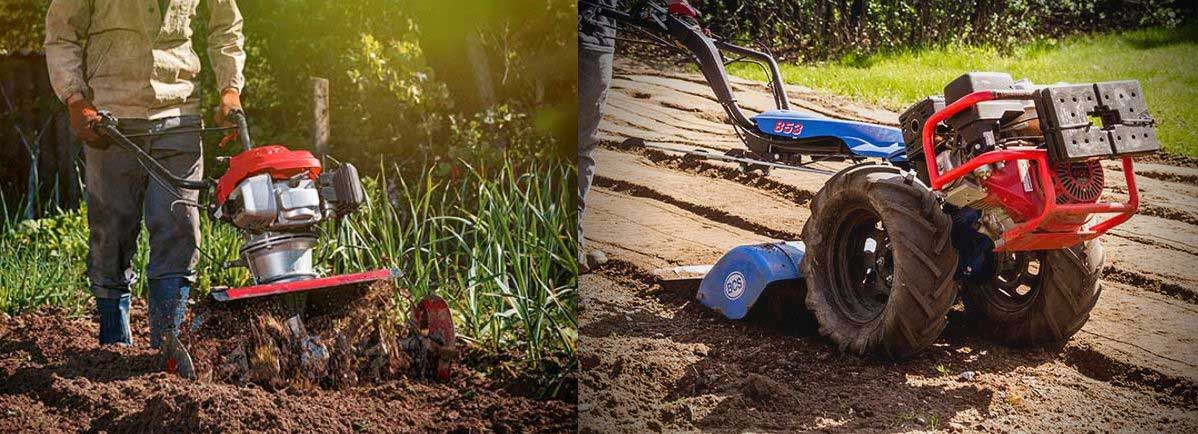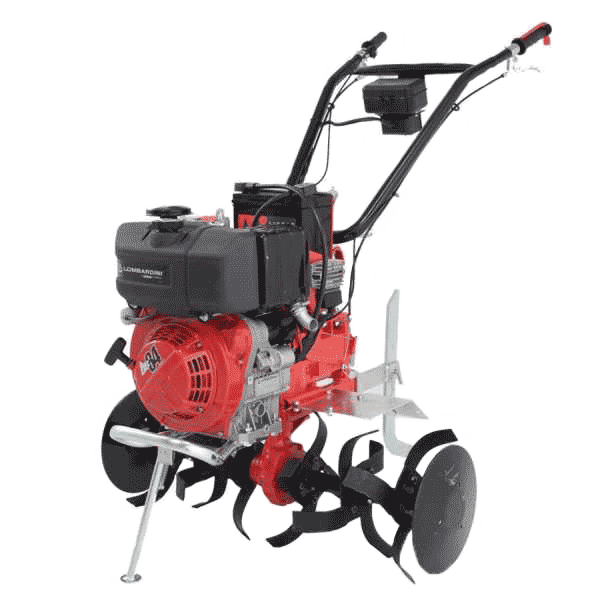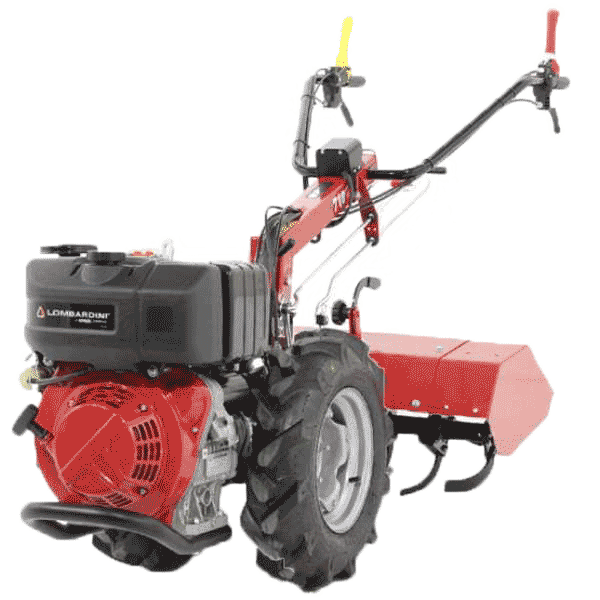A useful article to learn which are the main differences between
Garden Tillers and Two-wheel Tractors
by the Real Experts of Equipment for Soil Tilling and Care
Garden tillers and two-wheel tractors: which are the differences?
Farmers use large tillers attached to tractors to work on large fields, while smaller fields such as vegetable patches, small gardens, etc. are worked with garden tillers or two-wheel tractors, depending on the task at hand.
Although these two types of machine may appear similar at first sight, the most evident difference is that the two-wheel tractor has two wheels (which generate its traction), whereas the garden tiller does not (and is therefore driven directly by the tiller).
There are actually many differences between these two machines. For example, the garden tiller is able to dig deeper into the soil, whereas the two-wheel tractor works more on the surface, mainly performing a refinement function.
Let’s take a closer look at the main differences between the garden tiller and the two-wheel tractor, so that we can identify the most suitable tool for our working needs.

Garden tillers 
Two-wheel tractor
| GARDEN TILLER | TWO-WHEEL TRACTOR |
| It is extremely versatile: suitable for both small and large extensions of land, it guarantees greater productivity thanks to its wider tillers. | It is best suited for vegetable patches, specific crops or frequently tended land; it works best within rows |
| It can work on very compact and less tilled soils, even uncultivated land or that has not been tilled for a long period of time | It can only work on soft, already tilled soil; it is much more difficult and tiresome to handle on soil that has never been tilled |
| It can work on both flat and sloping terrain | It can work only on flat terrain (without slopes) |
| The tillers are adjustable and can reach a greater width, up to approx. 100 cm | The tillers are adjustable and can reach a maximum width of 80 cm |
| It digs deeper into the soil, reaching up to about 20 cm | It works the soil more on the surface (max 10-12 cm deep) |
| It provides a better and more accurate level of tilling as it “breaks up” the soil | It allows for better soil refinement by finely crumbling the soil (due to the wheels moving slower than those mounted on the garden tiller) |
| It performs almost exclusively a milling function; it can also be used for maintenance purposes (e.g. weeding). | It can be multitool: by replacing the tiller with other attachments, it can be used as, for example, a petrol rough cut mower or a sickle bar/ scythe mower |
| It works in only one direction and can have a single gear or have several forward gears (up to 3) and only 1 reverse gear | If multitool, it is also reversible (the handles can be rotated 180°): several forward and reverse gears allow use in both directions with an appropriate operating speed |
| It can have four different types of power supply: electric, battery-powered, petrol or diesel | It can be fuelled by petrol or diesel only |
| It is generally more cost-effective | It generally has a higher cost |
Great! We now know which are the main differences between garden tillers and two-wheel tractors.
If this information has been successful in helping you understand which tool is best suited to your needs (garden tiller or two-wheel tractor), then we suggest you also take a look at our purchasing guides:






